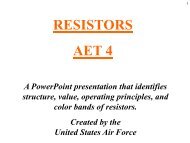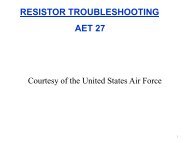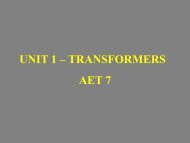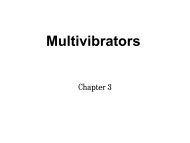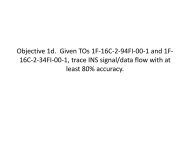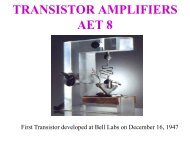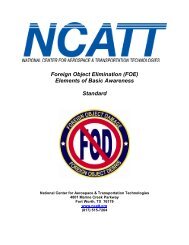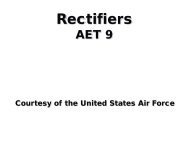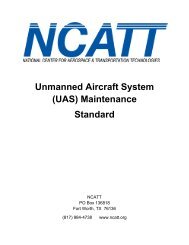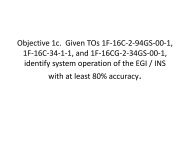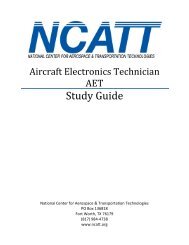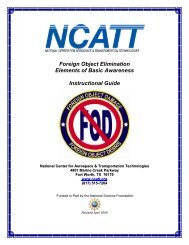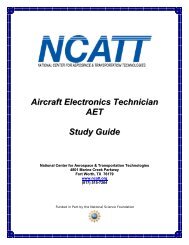(AET) Study Guide - NCATT
(AET) Study Guide - NCATT
(AET) Study Guide - NCATT
- No tags were found...
Create successful ePaper yourself
Turn your PDF publications into a flip-book with our unique Google optimized e-Paper software.
Page 49 of 51• Newton’s Third Law of Motion—Referred to as the law of action and reaction.For every action, there is an equal and opposite reaction.o Airfoil—Any surface on an aircraft that converts movement of air to an aerodynamicforce when they interact. The following components are examples of airfoils:• Wings—Camber, the curvature of an aircraft wing above and below the chordline surface, produces lift.• Propeller Blades—The shape and position of the blades when a propeller rotatespulls the aircraft forward. The propeller blades cause a higher pressure to be builtup behind the propellers than in front of the propellers.• Flight Controls—The primary group of flight control surfaces consist of the following:o Ailerons—Controls roll on the longitudinal axis. Ailerons are located on the trailingedge of each wing. Turning the control wheel left or right, or movement of the stickleft or right controls the ailerons.o Elevator—Controls pitch on the lateral axis. An elevator is hinged (moveable) to thetrailing edge of the fixed horizontal stabilizer on the tail. A stabilator combines thehorizontal stabilizer and elevator into one unit. Forward or aft movement of the stickcontrols the elevator.o Rudder—Controls yaw. A rudder is vertically hinged, moveable, and operated byfoot-petals in the cockpit or cabin. The rudder is mounted on the trailing edge of thevertical fin of the tail.• Flight Controls—The secondary or auxiliary group of flight control surfaces include thefollowing:o Flaps—Provide increased lift, drag, and wing area for take off and landing. Flaps areinboard of the ailerons on the trailing edge of the wings, and they are hinged to bendor split. For example, when the flaps are lowered in flight, lift increases, dragincreases, and stall speed decreases.o Trim Tabs/Controls—Work with the flight controls to reduce workload on the pilot.For example, elevator trim tabs free the pilot from having to constantly adjusting thepitch controls. Trim tabs also help to reduce drag to increase fuel efficiency.29. Safety (Operational Risk <strong>NCATT</strong> Training Standard Level (A)Management/Fall Protection)Objective:Identify basic facts and terms about operational risk management/fall protection.Content – Safety: Operational Risk Management/Fall Protection:The General Duty Clause requires employers to furnish to each of their employees a place ofemployment which is free from recognized hazards that are likely to cause death or seriousphysical harm to their employees. The General Duty Clause requires employers to comply withoccupational safety and health standards promulgated under this act.Copyright © 2008 by the National Center for Aircraft Technician Training. All rights reserved.Individuals may download, print, and make copies of this documentfor their own personal use. Commercial use prohibited.



